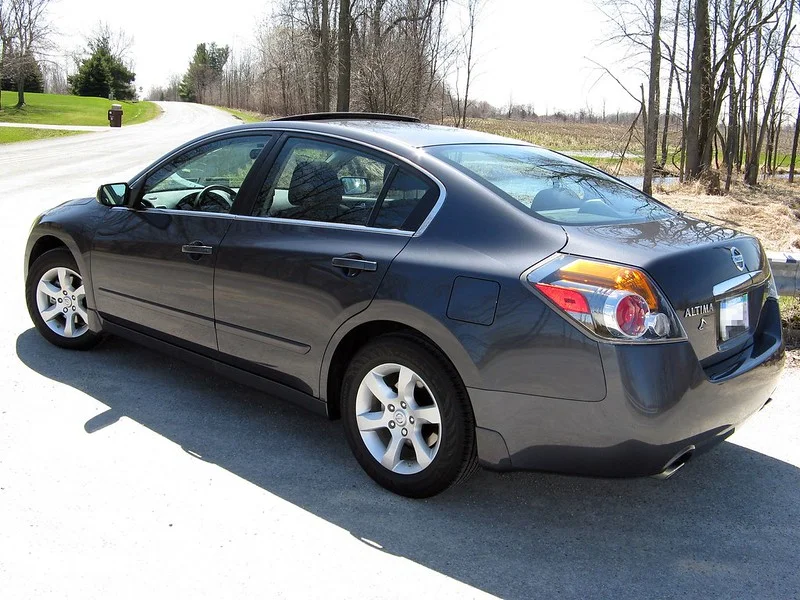How Fast Can A Nissan Altima Go

The Nissan Altima, a popular mid-size sedan, offers a blend of comfort, reliability, and decent performance. One question that often arises, especially among car enthusiasts and those looking to modify their vehicles, is: How fast can an Altima actually go? This isn't just about bragging rights; understanding the factors limiting an Altima's top speed can be valuable for performance tuning, diagnosing potential issues, and even making informed decisions during repairs.
Understanding Top Speed: A Multifaceted Approach
Determining the absolute top speed of an Altima is more complex than simply flooring the accelerator and reading the speedometer. Several factors come into play, including engine power, drivetrain configuration, aerodynamics, and electronic limitations.
Key Specs and Main Parts Affecting Top Speed
- Engine: The most critical component. Altima engines vary by model year and trim, typically ranging from a 2.5L 4-cylinder to a 3.5L V6. Horsepower and torque figures directly impact acceleration and the ability to overcome aerodynamic drag at higher speeds.
- Transmission: Most modern Altimas utilize a continuously variable transmission (CVT). While CVTs can improve fuel efficiency, they might not always be optimized for achieving maximum top speed compared to traditional geared transmissions. Gear ratios, both overall and final drive, determine the relationship between engine speed and wheel speed.
- Drivetrain: Most Altimas are front-wheel drive (FWD). All-wheel drive (AWD) versions are available in newer models. While AWD improves traction, it can also add weight and increase drivetrain losses, potentially slightly reducing top speed compared to a comparable FWD model.
- Aerodynamics: The Altima's body shape influences how easily it cuts through the air. A higher drag coefficient requires more power to overcome air resistance at higher speeds. Modifications like spoilers or body kits can alter the aerodynamic profile, but not always for the better.
- Electronic Speed Limiter: Many modern vehicles, including the Altima, have an electronically imposed speed limiter. This is a safety feature programmed into the engine control unit (ECU) to prevent the car from exceeding a certain speed. The limiter is often set slightly above the maximum speed the vehicle can realistically achieve under normal conditions.
Theoretical vs. Actual Top Speed
It's important to distinguish between theoretical and actual top speed. The theoretical top speed can be calculated based on engine power, gear ratios, tire size, and drag coefficient. However, this calculation doesn't account for factors like drivetrain losses, wind resistance variations, and the electronic speed limiter. The actual top speed is what you can realistically achieve on a safe, controlled environment (like a track), and it's typically lower than the theoretical value.
How It Works: Overcoming Limiting Factors
Reaching an Altima's maximum speed involves a delicate balance of power, gearing, and aerodynamics. The engine must generate enough power to overcome the increasing aerodynamic drag as speed rises. The transmission must provide appropriate gear ratios to keep the engine within its optimal power band. The electronic speed limiter, if present, prevents the engine from exceeding a predetermined speed. Removing or modifying the speed limiter requires specialized knowledge and equipment and may be illegal in some areas. Additionally, modifying the vehicle's speed capabilities might void the warranty.
The ECU plays a crucial role in managing the engine's performance. It monitors various sensors, including engine speed, throttle position, and vehicle speed, to optimize fuel delivery and ignition timing. The ECU also enforces the speed limiter. Tuning the ECU can potentially increase power and remove the speed limiter, but it's essential to understand the risks and potential consequences.
Real-World Use: Basic Troubleshooting and Performance
If you're experiencing difficulty reaching the expected top speed, consider the following:
- Tire Pressure: Ensure your tires are properly inflated. Underinflated tires increase rolling resistance, reducing fuel efficiency and potentially limiting top speed.
- Air Filter: A clogged air filter restricts airflow to the engine, reducing power. Replacing a dirty air filter can improve performance.
- Spark Plugs: Worn spark plugs can cause misfires, leading to reduced power and performance. Inspect and replace spark plugs as needed.
- Fuel Quality: Use the recommended fuel grade for your Altima. Lower octane fuel can cause engine knocking and reduced performance.
- OBD-II Scanner: Use an OBD-II scanner to check for any diagnostic trouble codes (DTCs) that might indicate engine problems.
Performance Modifications: Upgrading components like the exhaust system, intake system, or ECU can potentially increase horsepower and torque, leading to a higher top speed. However, these modifications should be done by qualified professionals to ensure proper installation and tuning.
Safety: Highlighting Risky Components and Procedures
Modifying your vehicle to increase its top speed can be risky. It's crucial to prioritize safety and handle potentially dangerous components with extreme care. Specifically:
- ECU Tuning: Incorrect ECU tuning can damage the engine or transmission. Always consult with a reputable tuner with experience with Nissan vehicles.
- Speed Limiter Removal: Removing the speed limiter can increase the risk of accidents. Be aware of your surroundings and drive responsibly.
- High-Speed Testing: Testing top speed should only be done on a closed course or racetrack under controlled conditions. Never attempt to reach top speed on public roads.
- Brakes: Ensure your braking system is in good working order. Upgrading to performance brakes can improve stopping power at higher speeds.
Always remember that increasing the performance of your vehicle may require modifications to other systems, such as the brakes, suspension, and tires, to ensure safe and reliable operation. Neglecting these supporting modifications can lead to dangerous handling characteristics and increased risk of accidents.
While we don't have a specific wiring diagram directly illustrating top speed limitations, we do have extensive technical documentation covering the engine control unit (ECU), transmission control unit (TCU), and related sensor data for various Altima model years. This information can be invaluable for understanding how these systems interact and potentially identifying factors limiting performance. Please reach out to our support team with your specific vehicle year and trim to inquire about accessing these files.
